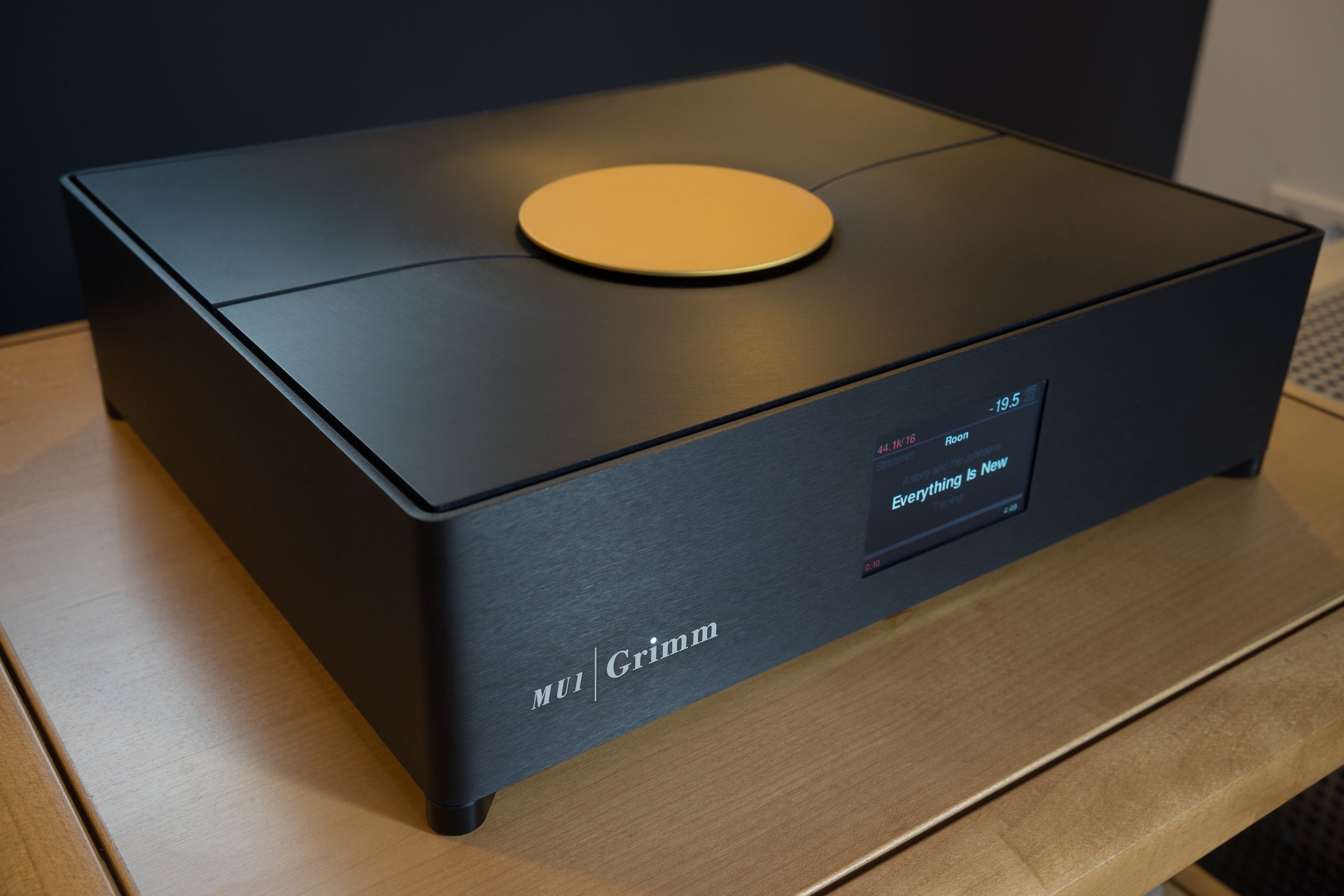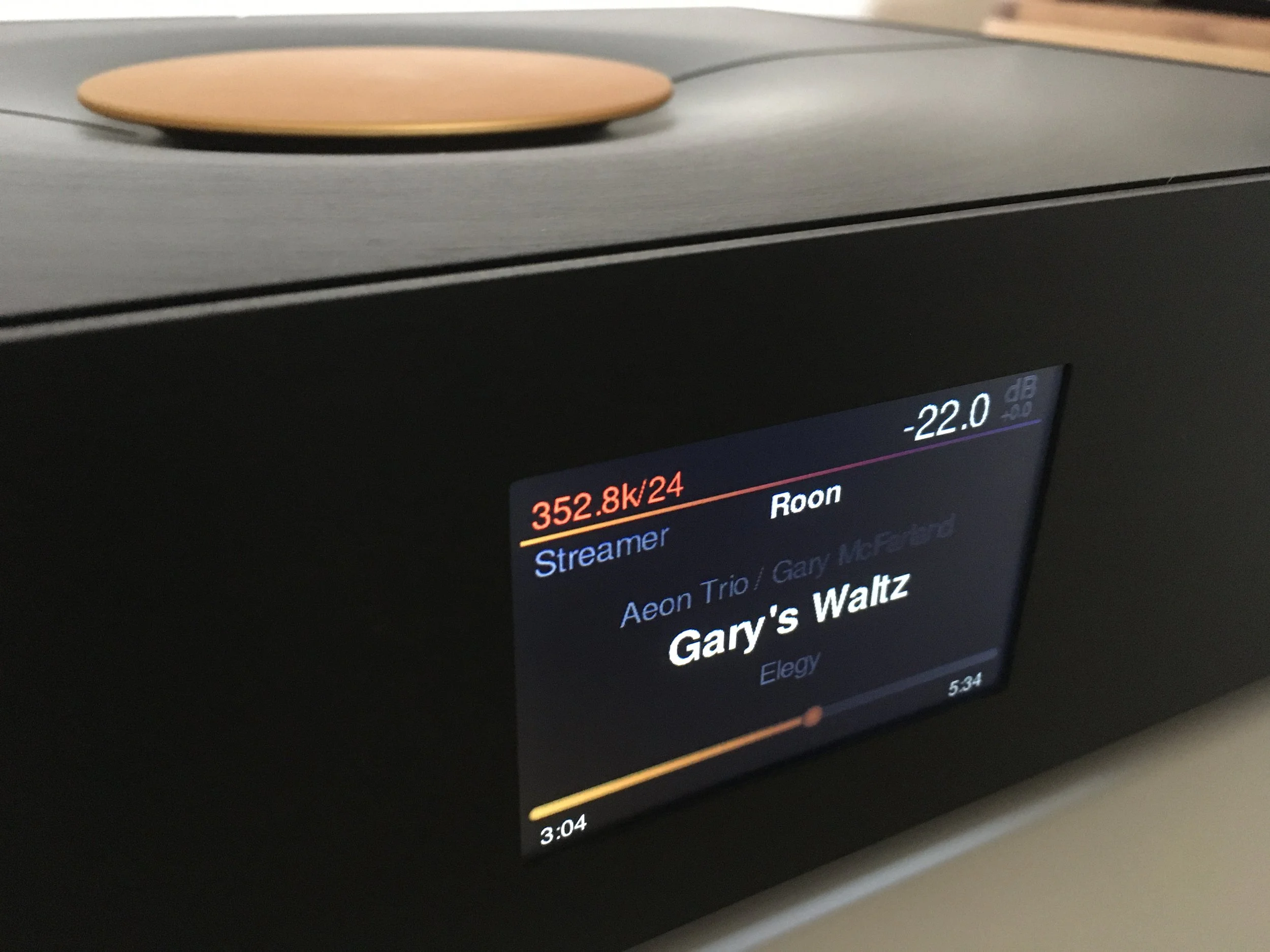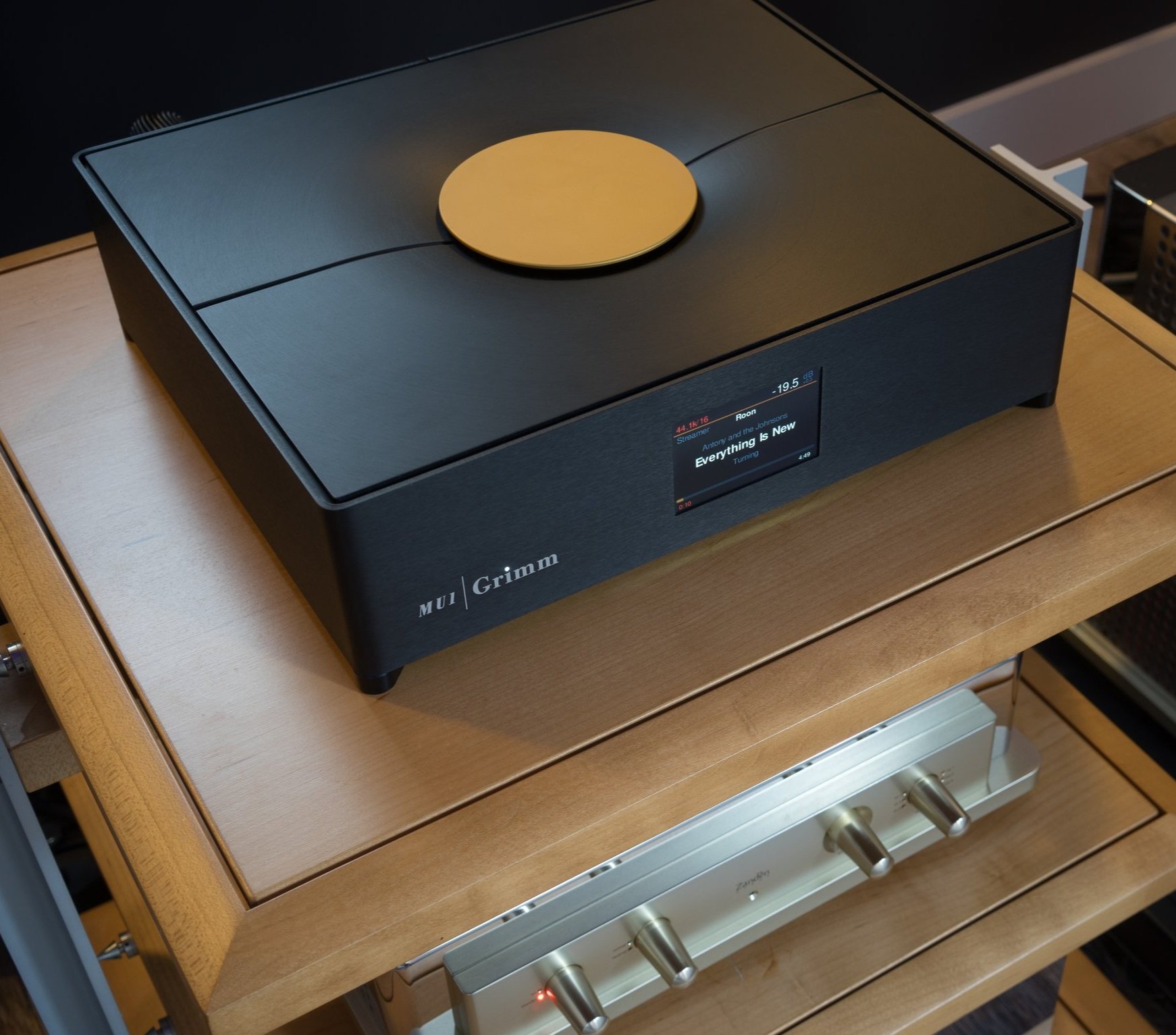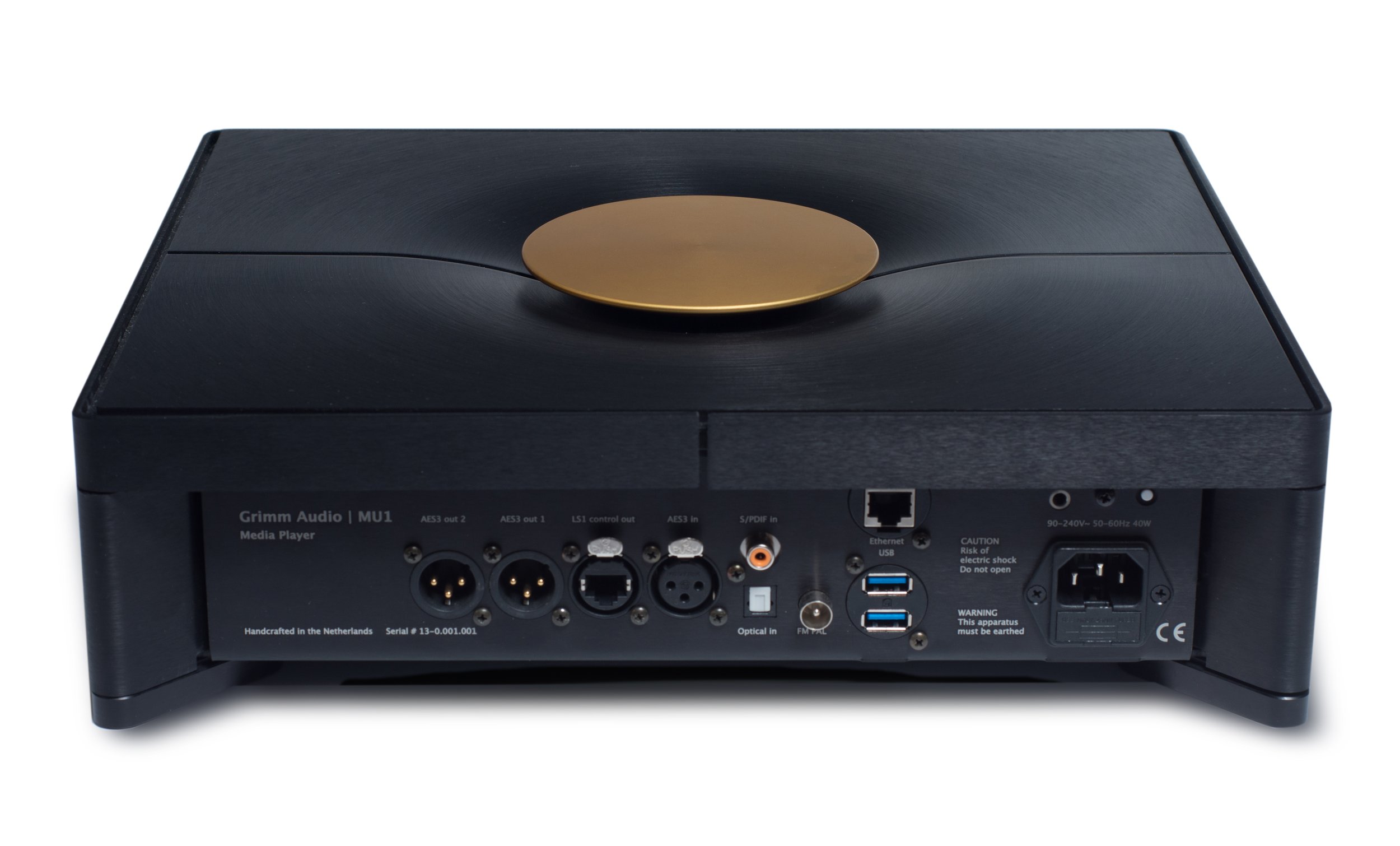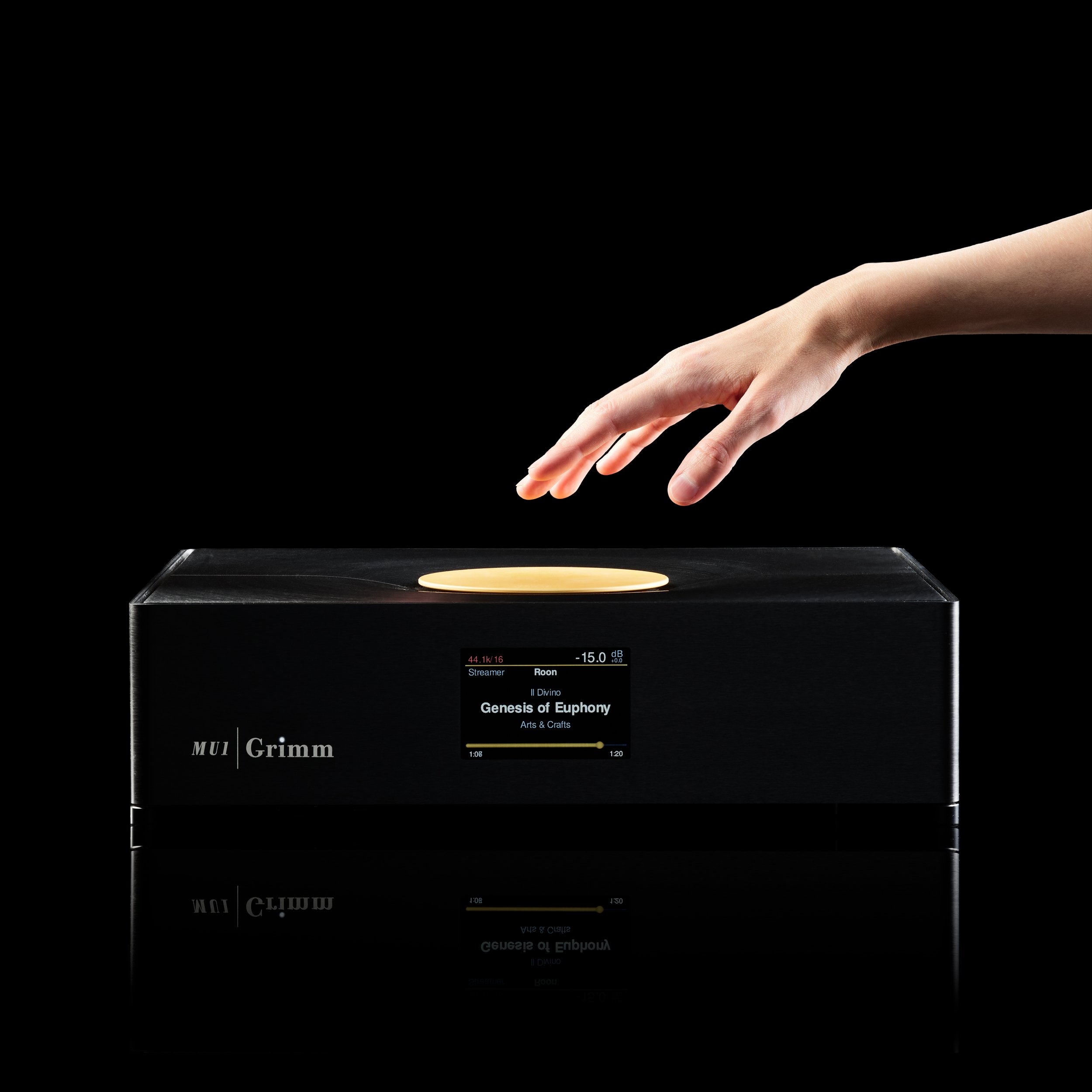GRIMM AUDIO MU1 - REVIEW
A Streamer Par Excellence!
There is nothing quite like the music which ushered us into adolescence, our teen years, our start as young adults on the road to adulthood. Or perhaps I’m projecting my experience onto the reader. I imagine I should make this more personal.
I was, perhaps, a bit of an anomaly in that jazz is where I cut my preschool to early school ‘musical teeth’. This, I imagine, would have been anathema to most. My early teen years saw the embrace of classical music via my high school music teacher, who was a most passionate man when it came to opera and classical and choral music. It was clearly contagious for me, who had come to music early. My middle to late teen years saw a veritable cornucopia of musical introductions—Rickie Lee Jones, Stevie Wonder, Cat Stevens, Donny Hathaway, Kansas, Fleetwood Mac, Bill Withers, Joni Mitchell, Al Green, Marshall Tucker, etc.
I recently heard from a good friend that more and more folks are returning to the music of their adolescent, teen, and/or young adult years and turning away from the current musical scene. It was a very timely comment, but then, she has always had a way with delivering that word, that phrase, that confirmation or revelation just when needed. I had been, for some time, deeply immersed in the songs, bands and jazz albums that had formed the foundation of my early musical journey, as the current musical evolutions had evaded my interest. Why? And what has made this return so tempting and so rewarding?
There were two reasons really. The first was that songs, even jazz movements, as validated, at times, by liner notes or subsequent revelations, were all or mostly all stories. Stories that connected us to a personal experience, to another’s experience, or that provided insight into love, life, a different perspective, a truth, a fantastical tale.
The Beach Boys’ “California Girls” was, well, an ‘experiential’, coast-to-coast journey, whereas Rickie Lee Jones’ “Company” spoke to the poignant loss and the heartfelt memories of that special love. And Donny Hathaway’s “Jealous Guy” provided a parallel to our insecurities catalyzed when we are deeply in love. Kansas’ “Dust in the Wind” was an existential story, a story of the ephemeral nature of life itself, beautifully sung. I imagine how a particular song and its story might now come to your mind too.
The second thing was that my stereo system of years gone by had not served me very well, as it had been lacking in both transparency and resolution, at the very least. Given my current experience with Hi-Fi, this painted my earlier systems as opaque given that I was unable to hear or clearly discern words, lyrics or phrases. And this had resulted in humming or mumbling my way through long known songs whose words I had never understood. Further, it was often difficult to discern the tone and timbre of various closely related instruments—violin, viola, cello, etc. Or, again, sometimes I would not hear musical instruments buried in the mix at all.
However, as I returned to these songs of long ago, the songs of my youth, I discovered a wealth of information being made clear to me by the march of technology in stereo and personal hi-fi systems. Now words, lyrics and phrases were being made crystal clear, while musical instruments that were previously buried deep in the mix emerged to take their rightful place, and, in this way, the new technology has brought new light and appreciation and love to the old and the various musical touchstones of my life. And this brings me to the review of the Grimm Audio MU1 streamer and its exceptional ways of revealing that music, all music afresh.
REFRAIN: Unlike most reviews, this review will be non-sequential, as it will start with how the headphones actually sound and not the process of physically “undressing” them and/or laying out their various parts, specifications, etc. Think of this review then, as a non-linear movie—Memento, Kill Bill, Arrival, Eternal Sunshine of the Spotless Mind, etc—that, likewise, starts at the end and winds its way to the beginning.
SOUND
The Grimm Audio MU1 streamer is easily at the forefront of technological progress and stands as testament to the fact that high-fidelity musical reproduction is light years ahead of where it was just a few short years ago, let alone the days of my youth. But that is only half of the picture!
In truth, there was a time, not that long ago, when I doubted that wireless or streaming playback would soon or ever come close to challenging CD, let alone LP playback. Well, I have been proven wrong, at least in terms of ‘connected’ streaming. And the Grimm Audio MU1 has taught me that lesson in two most remarkable ways.
As a streamer utilizing the USB output to DACs—Mola Mola Tambaqui, Bricasti M1SE— the Grimm Audio MU1 is at the top of the streamer ‘game’. It is incredibly transparent, resolving, and able to pull, at depth, more detail than any streamer should have a right to. Its musicality is the hyper-simulacrum of fine analog in its liquidity—the unrestrained flow of music, free from grain and sibilant nasties, while wonderfully coherent. And the Grimm Audio MU1’s low frequency signal to its mates, should they be up to the task, will guide them easily to the sub-bass strata.
However, when utilizing the Grimm Audio MU1’s AES/EBU output, which is the only output that upsamples to 24-bit/176.4kHz, instead of USB, everything, and I mean everything, moves to a higher quantum state of performance. There were many moments of jaw-agape, rapid-onset catatonia as triggered by the Grimm Audio MU1’s rendering of music via the AES/EBU. I scarce believe that there is ANYONE who can listen to these two configurations—USB versus AES/EBU—and not be able to clearly discern between them. Take this then as a dare.
In terms of bass alone, while the USB configuration travelled easily to the inland shores of the sub-bass region, the AES/EBU configuration can be said to have a second home deep in the sub-bass region, beside the Holy-Bass-Head-Grail. Suffice to say, that even headbangers will be well served via this configuration.
Further, the AES/EBU configuration unfolded nuance and refinement, a richness of timbre and tone, greater resolution and transparency, all in a way that should send shivers down the spines of its astronomically priced brethren. Did I mention the black-quiet background via this connection from which the music quietly levitated? Well, there’s that too. Yikes. Yikes. Yikes. Are we witnessing a Clark Kent versus Superman transformation here via these two outputs? I’m afraid so.
The Grimm MU1 DAC’s volumetric cube—its soundstage—via the USB configuration with Mola Mola Tambaqui, Blue Hawaii Special Edition HPA\E—was quite deep, wide, and with very good height. Positioning—where performers are on stage—separation— the space between performers—and layering—relative depth of performers, across any given stage or orchestra or small cafe—were superb. However, flip the switch—select the Grimm Audio MU1 via the Roon menu, then select your DACs AES/EBU digital input (you’ll need to have an AES/EBU connection) and, relatively speaking, you’re in another world. The soundstage expands in all directions, literally. The various imaging criteria—positioning, separation, layering—are also much better established, the palpability, tone and timbre, the gravitas and musicality all come together gorgeously.
“But why," you ask, is the AES/EBU so much better? Jitter. Let me explain that by way of an analogy.
Imagine a carnival ride. In this ride a person climbs into the apparatus or the three-quarter formed sphere. As the carney secures you in and closes the door, a lever is pulled. The carney then asks you to read the four word sentence before you. He records.
Immediately thereafter, the sphere with you in it begins to shake incredibly! The carney with a wry smile points to the sentence. “If you can read this sentence clearly," the carney says, “with every word understood and in your natural voice, like before, this ride is free.”
You smile and attempt to say the sentence, but because of the shaking you are completely unable to issue a single coherent word. Frustrated, you say, “Thiiiiiis iiiissss nooootttt faaaaair.”
The carney smiles, nods, says “Okay,” and reduces the shaking of the sphere by half.
You redouble your efforts and try again, but still you are unable to read the sentence with any semblance of normality.
The carney reduces again, by half, the shaking and then makes several more reductions, each time by half again. A smile on his face, while all the while you struggle. When you’re finally able to read the sentence with some semblance of normality, you smile.
The carney now with a wide grin pulls a small tape from his jacket. He hands you two tapes.The first is your voice, recorded before the ride, reciting the sentence. The second is your proud final reading while being shaken almost imperceptibly by the ride. He plays it back.
Your face shows a slight grimace. “That sounds, well, different, from the first one. Not quite like me,” you say.
“Jitter,” he says. “Imperceptible shaking affects the sound of your voice, and, most importantly, music playback, even when it’s barely perceptible to you or not perceptible at all.”
You nod. “May I have those tapes?” you ask.
The carney removes a manila envelope, places the two tapes in the envelope and hands it to you, a wide, ready smile on offer.
The reason then for the “why” of the Grimm Audio MU1’s daunting musical abilities via AES/EBU is the profound way that it seemingly stills/diminishes ‘jitter’ to some subatomic domain with regard to music playback.
Eelco Grimm, founder and designer of Grimm Audio, provides a succinct reason for the AES/EBU’s spectacular performance:
“It is the extremely high performance/oversampling of our proprietary FPGA board and our software.”
The Grimm MU1 Streamer was paired with the Mola Mola Tambaqui DAC, Bricasti M1SE DAC, Viva Audio Egoista STX\HPA\E, Blue Hawaii SE\HPA\E, LTA Z10e\HPA, and the Trilogy H1 Energizer\HPA\E (review coming). The headphones used were the STAX SR-009S, Dan Clark VOCE, Meze Empyreans, Meze LIRIC, ZMF Atticus, ZMF Véríté, ZMF Atrium, and Rosson Audio RAD-0. Cabling throughout was Audience’s Front Row Cables and AntiCable and power was the TORUS RM20 and Audience’s AdeptResponse.
BASS
Eiji Oue’s “Infernal Dance of King Kashchey” (Stravinsky, Reference Recording) cues for play and immediately I am reminded of the Enleum AMP-23R’s bass response which was nothing short of explosive, uncompromising, phenomenal! In a better, best sense the Grimm Audio MU1’s USB implementation is not quite up to the ferocity of the AMP-23R’s bass response, but it is very good. The Grimm Audio MU1’s AES/EBU implementation, on the other hand, stands toe to toe, eye to eye with the Enleum AMP-23R’s bass response. Remarkable! As “Infernal Dance of King Kashchey” plays I am reminded of my discussions with a Minnesota Symphony Orchestra’s staff member, who told me that seven tympani had been assembled for this movement! Like the Enleum AMP-23R before it, the Grimm Audio MU1 via AES/EBU, the Mola Mola Tambaqui, and the Blue Hawaii Special Edition together match the prodigious bass of the Enleum AMP-23R (it too as allied to the Tambaqui). It should be said that while I rank the Blue Hawaii’s bass response very highly for an electrostatic headphone amp, it has no business matching the Enleum AMP-23R. Not to belabour the point, but while the Grimm Audio’s USB’s bass response was very good and brushed past the borders of the sub-bass region, it pales in comparison to the AES/EBU rendering of bass. This relative difference was consistent across all bass-rich tracks or those tracks that featured moments of sub-bass reach. Dave Holland’s “Emerald Tears” (Emerald Tears, ECM), Massive Attack’s “Angel” (Mezzanine, Circa), Marcus Miller’s “Power” (M2, Concord), Ben Harper and the Innocent Criminals’ “Beloved One” (Burn to Shine, Virgin), and others all had tremendous gravitas and palpability.
MIDRANGE
Harry Belafonte’s Belafonte: At Carnegie Hall (Live) (RCA-Legacy) via the Grimm MU1 is brilliant from beginning to end. It is transparent, beautifully resolved, rich with detail, and incredibly musical. And therein lives its paradox. The spaciousness afforded this album via the Grimm MU1 relative to the Roon Nucleus Plus is wider still with images locked firmly in space and at greater relative depth: in other words the stage is ‘more’ Carnegie Hall. Tone, timbre, texture are natural, rich, intoxicating. It is a presentation that places it farther away from the neutral zone relative to the Roon Nucleus Plus, and while both are immersive, the Grimm Audio MU1 is even more so. The hour and thirty-six minutes has never passed by so quickly. I switch to AES/EBU and repeat. From the opening drum roll of “Darlin’ Cora” which is decidedly more pronounced, more potent, and more dimensional than before, to “Sylvie” to “Man Smart (Woman Smarter)” to the final song, the overlong “Matilda”, the album is more transparent, palpable, immersive and “best” is to be had on all counts. All counts. The rendering of Mercedes Sosa’s entire Misa Criolla album, and of a wide variety of songs such as Voces8’s “Agnus Dei” (Enchanted Isle, Decca), Al Jarreau’s “Dinosaur” (Tenderness, Rhino), and Shirley Horn’s “Beautiful Love” (You Won’t Forget Me, Verve) via the Grimm Audio’s AES/EBU output was, to a one, phenomenal! Full stop.
TREBLE+
I went into the treble part of the review with AES/EBU fully engaged and, in truth, didn’t look back. Yes, the USB output was very good in pre-review listening, but by this point it was pretty clear what output I preferred. Dave Brubeck’s “Take Five” (Time Out, Columbia-Legacy) sidles up and it is more alive, more dynamic, and the cymbals—crash, ride, hi-hats—more palpable and three dimensional with greater ‘shimmer’ than ever. Even the various drums and their skins and their inner volumes are better fleshed out and resolved. Additionally, the stage is broad, the players fixed within and at solid, relative depth. Timbre and tone are rich and enthralling. Hilary Hahn’s rendition of Bach’s “Chaconne from Partita No. 2 for Violin in D minor, BWV 1004” (The Essential Hilary, Sony Classical) begins and there is more weight, force and dynamics, which are wrapped around nuance, beautiful tonal shadings, and a sky-high silken treble. Her playing is impassioned, emotive, and the music continually tugs at the heart. It is a beautiful rendering made real via the Grimm Audio MU1 and its AES/EBU output, the Mola Mola Tambaqui, and in this instance the Blue Hawaii SE, though it has, at times, also been the Viva Solista STX, the Trilogy H1 Energizer (review coming), and the LTA Z10e.
The Wrappings and Accessories
The Grimm Audio MU1 comes in a nondescript brown outer box which houses within it a nondescript brown inner box, which stops short several inches across the length of the outer box, wherein a much smaller box bridges the gap.
Within the larger inner box, comfortably seated, via various secured and positionable foam blocks and cutouts, is the Grimm Audio MU1 streamer. The smaller inner box holds a stock power cord, a beautifully printed instruction manual, a flyer that encourages warranty extension, and a plug-in, IR facilitator.
In truth, the packaging pales in comparison to the Grimm Audio MU1 which is beautifully designed, elegant, and eye-catching. I imagine it sitting in homes from great to small to glorious to minimalist and being a splendid addition.
Design—Look and Feel
Clean. Simple. Elegant. The Grimm Audio MU1 is unassuming, of minimalist elegant design, and modern. Its top surface bears a large bronze/gold wheel that assists in its functionality (see Functionality).
The Grimm Audio MU1 is sure to find a welcome in most homes where both form and function are held in high esteem.
FUNCTIONALITY
Functionality comes from connecting the ethernet cable to one’s MU1, attaching the USB cable from the DAC(s), and finding and pushing the tiny, nearly invisible white button above the IEC socket. Of course, you’ll need to select the MU1 as your Roon Core, enable it, and select it for a given zone.
The Grimm Audio MU1 bears a front facade that is minimalist—a small, centered screen which plays host to numerous bits of information, the product’s abbreviated designation (MU1) and the company’s logotype, wherein a white indicator light says awake or asleep, positioned directly above the Grimm’s “I.”
Its side panels are clean and completely barren of information, buttons, etc, while its top—concave and bifurcated—split in two—holds at its center a large gold/bronze wheel which is both selector and when depressed, input device.
The MU1’s back panel is a good deal less minimalist. From left to right is an S/PDIF output (on newer models), two AES/EBU outputs (AES3 out 2 and AES3 out 1) and ethernet enabled LSI controlled out (for its LS1 speakers and remote products) and, in order, three inputs—AES/EBU (AES3 in), S/PDIF in, Optical in. Beside the final input is a coaxial connection for an FM antenna. Next is an ethernet connection and beneath it two USB3 outputs. At the top far right is a remote input, beside it a small white on/off switch (easy not to see) and an IEC receptacle.
The bronze/gold wheel as referred to above will take a bit of getting used to. It turns, passing through various screens—on/off, tutorial for the wheel itself, settings for remote control, oversampling/non-oversampling, remote technical support, etc. Depressing the wheel either sends one back—long press—or to select a given function within a menu—short press.
It will, indeed, take a little time to get up to speed, but once there, you can settle in to hear one of two systems via the Grimm Audio MU1—“better (USB)” or “best (AES/EBU).”
CONCLUSIONS
The Grimm Audio MU1 operates beautifully across the various realms of its functionality. It is a Roon Core, equipped for ethernet and USB connections which allows it to stream music beautifully from one’s Roon library, attached NAS drives, or digital input devices. It mates beautifully with DACs not enabled with ethernet input or USB output—old school—and upsamples to 24-bit/88.2kHz (2x) or 24-bit/176.4kHz (4x) via its AES/EBU output. It is an ethernet-connected source to Grimm Audio’s LSI active speakers and remote. It is an exceptional transport (whether or not it is equipped with an internal drive). It incorporates via selected outputs—USB or AES/EBU—a “better” and “best” approach to rendering one’s music that is breathtaking.
There is, perhaps, no aspect at which the Grimm Audio MU1 does not excel across its functionalities and collective voices—both “better” and “best”. It is supremely transparent, easily able to resolve the most dense passages, movements and songs, and it lifts prodigious amounts of detail, most especially via its AES/EBU (4x) output. It is also natural and richly musical in a way that makes it compelling and immersive and fluid as if an analog rendering. There is also a gravitas or weight, if you will, that brings forth palpability—fully fleshed out/real performers and performances. The Grimm Audio MU1’s combined strengths make it quite a formidable streamer.
Again, I count myself extremely fortunate to review such incredible components. Though this is not always the case: those components you will never read about in these pages are simply shipped back to manufacturer/distributor, with explanation as to the ‘why not’ of the review. And said product is not mentioned again. We don’t do negative here. That said, the Grimm Audio MU1 wins deservingly our highest award for an exceptionally compelling and immersive musical experience—the DIAMOND AWARD.
Pros: A Roon Core and streamer of the highest caliber with extreme transparency and resolving capabilities, an almost preternatural ability to render as if analog, which translates to a natural, wholly engaging, and beautifully musical experience. Exceptional, direct and fast remote technical support!
Cons: Takes a minute to get up to speed. And one must read the instructions thoroughly!
The Specifications
GRIMM AUDIO MU1 Streamer
General:
Max. ambient temperature for operation: 50 °C.
Fuse (worldwide): 630 mA fast blow.
Weight: 4.5 kg.
Dimensions: width x depth x height: 355 x 295 x 100 mm or 14” x 11.6” x 3.9”.
Package dimensions: 536 x 392 x 219 mm.
Clock specifications:
Internal intrinsic clock jitter <0.6 ps RMS (> 10 Hz). Can slave to 44.1 kHz and 48 kHz based digital sources at 1FS, 2FS and 4FS +/- 50 ppm.
The output will mute for 80 ms when changing clock base rates.
Sample rate conversion with fpga processor:
Upsampling of 1FS and 2FS files, streams and digital sources to 4FS or 2FS with “Pure Nyquist” decimation filter.
Downsampling of DSD64, DSD128, DSD256 and DXD files and streams to 4FS or 2FS with “Pure Nyquist” decimation filter.
Optional FPGA volume control on Digital 1 and 2 outputs: from 0 dB to -63 dB in 1 dB steps. Latency from digital in to digital out: 11 ms at 48 kHz.
Internal computer properties:
Intel i3 CPU, > 2.4 GHz.
2 cores, 4 threads, with Hyper-threading.
4GB DDR4-2133 RAM 2400 MHz.
1000 Mb/s Ethernet.
2x USB 3.0 port.
Internal SSD for OS.
Optional internal SSD for music data storage.
Display specifications:
Full colour TFT LCD.
3.5 inch diagonal.
480 x 320 pixels.
The Company
GRIMM AUDIO BV
GRIMM AUDIO BV
Grimm Audio MU1 Streamer ($11,400)
info@grimmaudio.com
grimmaudio.com
THE DISTRIBUTOR
ANALOG AUDIO
Review sample provided by Analog Audio. —paulsales@analog.audio
analog.audio
612-808-0709
THE REFERRAL
THE VOICE THAT IS
Doug White
contact@thevoicethatis.com
thevoicethatis.com
610.359.0189
The SYSTEMS
1.
Accustic Arts Player II CDP/DAC
Mola Mola Tambaqui
Dan Clark VOCE
STAX SR-009S
Viva Egoista STX HPA
Audience Front Row
AntiCable
Black Cat TRØN Signature Digital Cable
RSX Power8
TORUS RM20
2.
Bricasti Design M1SE DAC
Dan Clark VOCE
STAX SR-009S
Meze Empyrean
Meze LIRIC
Rosson Audio RAD-0
ZMF Atrium
ZMF Véríté
LTA Z10e HPA/Integrated/Blue Hawaii SE
Audience Front Row
AntiCable
Audience AdeptResponse
